Sea Lamprey Facts
- This fish with the nightmarish appearance typically goes by the relatively unassuming common name of the Sea Lamprey. The species does, however, possess another, far more attention-grabbing general name. That’s the term of the vampire fish.
- Among scientific professionals, such as researchers, it’s better known by its formal name, though. Yet, as remains common for such monikers, it’s hard to pronounce for the layman. It’s formal name in official circles is that of Petromyzon marinus.
- It further received that name at the hands of the renowned Swedish researcher, Carl Linnaeus. He accomplished the first known acknowledgement of it as a separate and distinct species. This scientifically noteworthy event occurred in the year 1758.
- Regardless of the term one chooses to employ, though, it’s a fascinating product of evolution. It’s also proven itself to be a remarkably hardy one. That’s due to the fact that, unlike many species around the world, it’s maintained a respectable population.
- That situation also appears to hold true throughout the entirety of its native range. Due to that fact, the IUCN currently lists it as a Species of Least Concern. That present status is reflected on the organization’s published Red List of Threatened Species.
- The intriguing, if disquieting to some, Sea Lamprey nevertheless faces the same threats to its existence as other marine species. These include such factors as accidental bycatch and habitat degradation. Its greatest threat, though, is likely climate change.
Related Articles
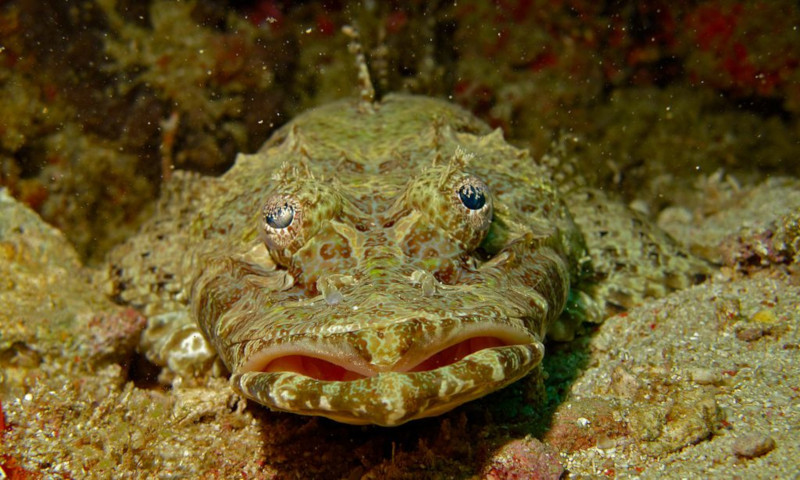
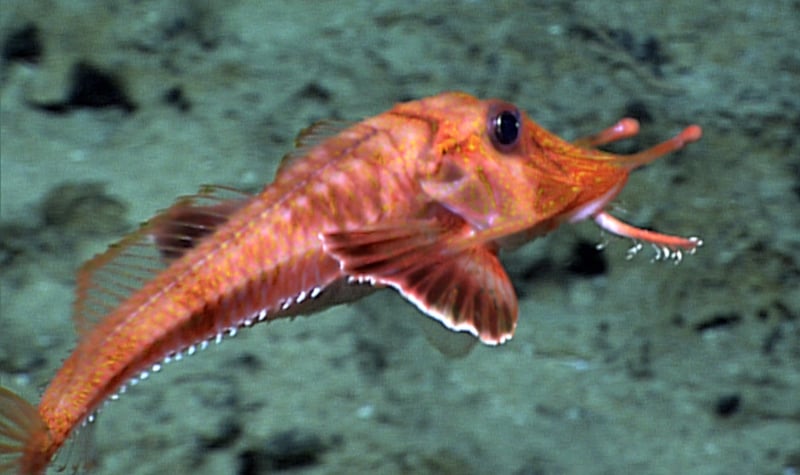
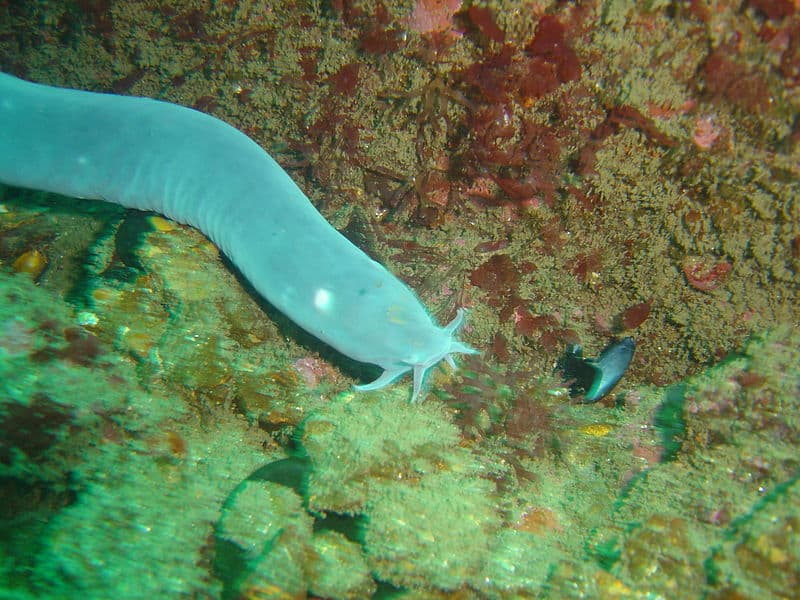
Sea Lamprey Physical Description
Though terrifying to some, the Sea Lamprey nonetheless remains a fascinating physical specimen. It easily personifies the resourcefulness and variability of Nature. It also manages to garner a high degree of inerest, if only scientifically, regardless of sheer physical size.
That’s because, despite its otherwise fearsome appearance, it’s a small species of fish. In what amounts to yet another intriguing aspect of its biology, it displays no noticeable degree of the physiological characteristic of sexual dimorphism. In this, it differs from most species.
Adults of both genders therefore appear virtually indistinguishable to the untrained eye. Males and females alike attain legnths measuring from 6 – 24 in (15 – 61 cm). Most, however, typically stay closer to the lower limit of that range. Weights rarely exceed 5.1 lb (2.3 kg).
The overall appearance of this marvel of evolution develops as strongly eel-like. This coincidental resemblance often understandably leads to its being mistaken for a variety of eel. Despite this, the distinctive fish differs from members of that group in many ways.
Unlike most fish, the Sea Lamprey develops skin free of scales. It also possesses an overall color scheme consisting of a background of light black to grayish-blue. It also tends to be darker on the upper side of the body. This, though, fades to lighter shades on the belly.
It’s the head of the creature that clearly draws the most attention, however. That’s due to its large, jawless mouth. This holds numerous small but razor sharp teeth. These appear in several concentric rows. Its mouth even opens wider than the width of the head of the fish!
- Kingdom: Animalia
- Phylum: Chordata
- Class: Hyperoartia
- Order: Petromyzontiformes
- Family: Petromyzontidae
- Genus: Petromyzon
- Species: P. marinus
Sea Lamprey Distribution, Habitat, and Ecology
Natively, the Sea Lamprey evolved to a relatively small zone of habitation. That’s true since its native range principally consists of the western and northern Atlantic Ocean. This wonder of Nature also appears in the Black Sea and the Mediterranean Sea, as well.
Within that natural range, the remarkable fish mainly appears along the shorelines of Europe and North America. Intriguingly, in North America it’s also native to the Connecticut River Basin in the United States. That’s due to its highly unusual migratory nature.
Partly due to its own unique patterns of behavior, however, it’s also now present in other areas. In these regions, it’s now considered an invasive species. That’s especially true in the Great Lakes of North America. In all areas it inhabits, though, it shows the same pattern.
It prefers to live near shore, but sometimes lives at depths of up to 13,123 ft (4,000 m). It’s also quite tolerant of a wide range of water temperatures. It’s been found at conditions ranging from 34 – 68 F (1 – 20 C). It tolerates both marine and freshwater environments.
Due to its unusual nature, the Sea Lamprey migrates during spawning season. At that time, it leaves its sea or lake habitat, and moves up rivers. Males prepare nests at the bottom of streams with a moderately strong current. The adults perish shortly after spawning.
Following hatching, the young spend several years in freshwater. Then, these undergo a metamosphosis, allowing them to migrate to the sea or sometimes lakes. As adults, the species feeds on the blood of prey. That prey consists of a wide variety of available species.
Species Sharing Its Range

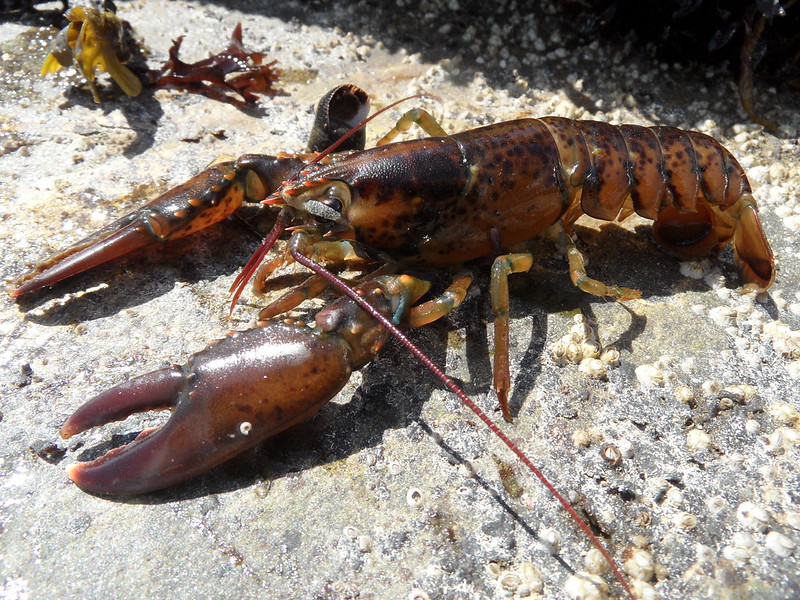

Check out our other articles on 7 Intriguing Terrestrial Invertebrates, Staghorn Coral, Kings Canyon, Honey Badger, Petra Iris, New Guinea Crocodile, Texas Blind Salamander, Hyacinth Macaw
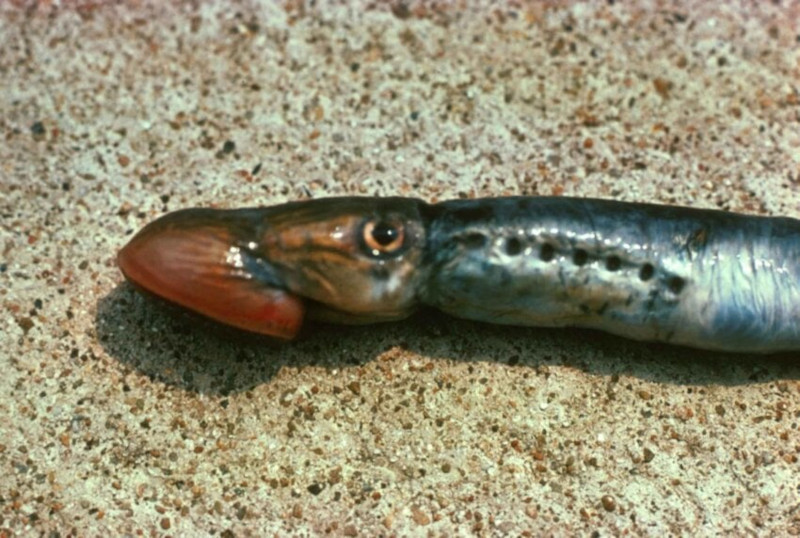

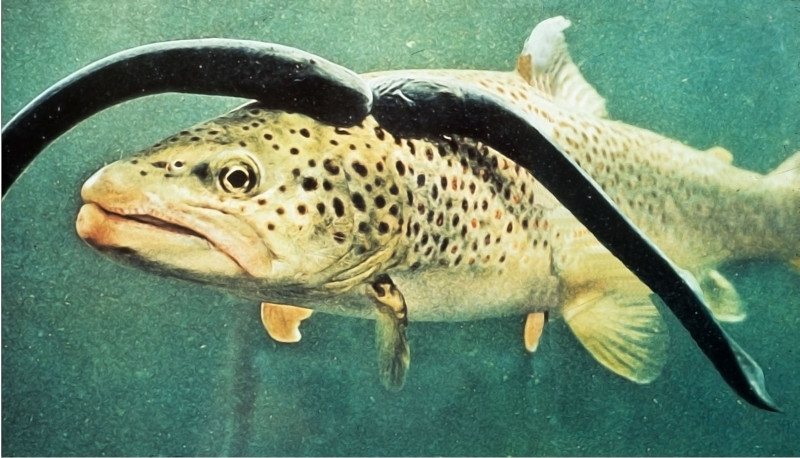









It is true that the marine branch enters freshwater streams in all areas used by this fish. However, after hatching and initial growth, the marine progeny most return to their marine systems to grow and mature until recycling back to the stream to reproduce again.
Meanwhile, a freshwater branch goes through its life cycle strictly limited to freshwater.
Hello San,
Thank you for your remarks. You are quite correct, indeed. It is a fascinating species.
Sincerely,
OBP